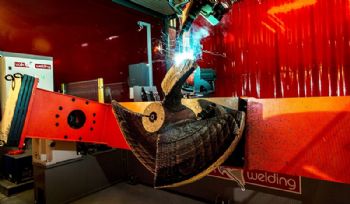
Earlier this month — and following months of development and testing — a consortium based at the Port of Rotterdam in the Netherlands unveiled a propeller that was made by Ramlab (Rotterdam Additive Manufacturing Lab (
www.ramlab.com)) using a combination of additive manufacturing and traditional machining.
Moreover, it has been officially approved for use by Bureau Veritas.
Replacing or repairing key parts on ships can take weeks or months, as crews wait for deliveries from warehouses on the other side of the world, but Ramlab says its hybrid manufacturing process can potentially provide replacement parts in a matter of days, saving significant amounts of money.
The consortium, which includes Damen Shipyards, propeller expert Promarin and software company Autodesk, tested the printed propeller in a series of “gruelling” tests on a tugboat.
These included speed trials and crash stop testing, which involved going from full throttle ahead to full throttle reverse — the heaviest loading a propeller can experience during normal operation.
Kelvin Hamilton from Autodesk said: “One of the most exciting things about this project is that we have not just produced a one-off demonstrator. It’s relatively easy to do something once, but to produce a certified part and establish a process takes more time and consideration.
"Working with a great team of partners, we’ve harnessed the best of additive and subtractive manufacturing to create a process that is repeatable. This provides the potential to radically transform the whole industry.”
The propellor is 1,300mm in diameter and weighs nearly 180kg. It is made from a custom nickel-aluminium-bronze alloy using Wire Arc Additive Manufacturing for the printing process.